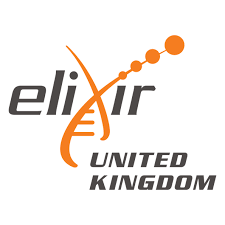1. Aguado C, Colón J, Ciruela F, Schlaudraff F, Cabañero MJ, Perry C, Watanabe M, Liss B, Wickman K, Luján R. (2008) Cell type-specific subunit composition of G protein-gated potassium channels in the cerebellum.
J Neurochem, 105 (2): 497-511.
[PMID:18088366]
2. Balana B, Bahima L, Bodhinathan K, Taura JJ, Taylor NM, Nettleton MY, Ciruela F, Slesinger PA. (2013) Ras-association domain of sorting Nexin 27 is critical for regulating expression of GIRK potassium channels.
PLoS ONE, 8 (3): e59800.
[PMID:23536889]
3. Balana B, Maslennikov I, Kwiatkowski W, Stern KM, Bahima L, Choe S, Slesinger PA. (2011) Mechanism underlying selective regulation of G protein-gated inwardly rectifying potassium channels by the psychostimulant-sensitive sorting nexin 27.
Proc Natl Acad Sci USA, 108 (14): 5831-6.
[PMID:21422294]
4. Ciruela F, Fernández-Dueñas V, Sahlholm K, Fernández-Alacid L, Nicolau JC, Watanabe M, Luján R. (2010) Evidence for oligomerization between GABAB receptors and GIRK channels containing the GIRK1 and GIRK3 subunits.
Eur J Neurosci, 32 (8): 1265-77.
[PMID:20846323]
5. Cruz HG, Ivanova T, Lunn ML, Stoffel M, Slesinger PA, Lüscher C. (2004) Bi-directional effects of GABA(B) receptor agonists on the mesolimbic dopamine system.
Nat Neurosci, 7 (2): 153-9.
[PMID:14745451]
6. Dissmann E, Wischmeyer E, Spauschus A, Pfeil DV, Karschin C, Karschin A. (1996) Functional expression and cellular mRNA localization of a G protein-activated K+ inward rectifier isolated from rat brain.
Biochem Biophys Res Commun, 223 (2): 474-9.
[PMID:8670306]
7. Fernández-Alacid L, Aguado C, Ciruela F, Martín R, Colón J, Cabañero MJ, Gassmann M, Watanabe M, Shigemoto R, Wickman K et al.. (2009) Subcellular compartment-specific molecular diversity of pre- and post-synaptic GABA-activated GIRK channels in Purkinje cells.
J Neurochem, 110 (4): 1363-76.
[PMID:19558451]
8. Fowler CE, Aryal P, Suen KF, Slesinger PA. (2007) Evidence for association of GABA(B) receptors with Kir3 channels and regulators of G protein signalling (RGS4) proteins.
J Physiol (Lond.), 580 (Pt 1): 51-65.
[PMID:17185339]
9. Hilgemann DW, Ball R. (1996) Regulation of cardiac Na+,Ca2+ exchange and KATP potassium channels by PIP2.
Science, 273 (5277): 956-9.
[PMID:8688080]
10. Jelacic TM, Kennedy ME, Wickman K, Clapham DE. (2000) Functional and biochemical evidence for G-protein-gated inwardly rectifying K+ (GIRK) channels composed of GIRK2 and GIRK3.
J Biol Chem, 275 (46): 36211-6.
[PMID:10956667]
11. Jelacic TM, Sims SM, Clapham DE. (1999) Functional expression and characterization of G-protein-gated inwardly rectifying K+ channels containing GIRK3.
J Membr Biol, 169 (2): 123-9.
[PMID:10341034]
12. Karschin C, Karschin A. (1997) Ontogeny of gene expression of Kir channel subunits in the rat.
Mol Cell Neurosci, 10 (3-4): 131-48.
[PMID:9532576]
13. Kobayashi T, Ikeda K, Ichikawa T, Abe S, Togashi S, Kumanishi T. (1995) Molecular cloning of a mouse G-protein-activated K+ channel (mGIRK1) and distinct distributions of three GIRK (GIRK1, 2 and 3) mRNAs in mouse brain.
Biochem Biophys Res Commun, 208 (3): 1166-73.
[PMID:7702616]
14. Kofuji P, Davidson N, Lester HA. (1995) Evidence that neuronal G-protein-gated inwardly rectifying K+ channels are activated by G beta gamma subunits and function as heteromultimers.
Proc Natl Acad Sci USA, 92 (14): 6542-6.
[PMID:7604029]
15. Koyrakh L, Luján R, Colón J, Karschin C, Kurachi Y, Karschin A, Wickman K. (2005) Molecular and cellular diversity of neuronal G-protein-gated potassium channels.
J Neurosci, 25 (49): 11468-78.
[PMID:16339040]
16. Kozell LB, Walter NA, Milner LC, Wickman K, Buck KJ. (2009) Mapping a barbiturate withdrawal locus to a 0.44 Mb interval and analysis of a novel null mutant identify a role for Kcnj9 (GIRK3) in withdrawal from pentobarbital, zolpidem, and ethanol.
J Neurosci, 29 (37): 11662-73.
[PMID:19759313]
17. Labouèbe G, Lomazzi M, Cruz HG, Creton C, Luján R, Li M, Yanagawa Y, Obata K, Watanabe M, Wickman K et al.. (2007) RGS2 modulates coupling between GABAB receptors and GIRK channels in dopamine neurons of the ventral tegmental area.
Nat Neurosci, 10 (12): 1559-68.
[PMID:17965710]
18. Lalive AL, Munoz MB, Bellone C, Slesinger PA, Lüscher C, Tan KR. (2014) Firing modes of dopamine neurons drive bidirectional GIRK channel plasticity.
J Neurosci, 34 (15): 5107-14.
[PMID:24719090]
19. Lesage F, Duprat F, Fink M, Guillemare E, Coppola T, Lazdunski M, Hugnot JP. (1994) Cloning provides evidence for a family of inward rectifier and G-protein coupled K+ channels in the brain.
FEBS Lett, 353 (1): 37-42.
[PMID:7926018]
20. Lesage F, Fink M, Barhanin J, Lazdunski M, Mattéi MG. (1995) Assignment of human G-protein-coupled inward rectifier K+ channel homolog GIRK3 gene to chromosome 1q21-q23.
Genomics, 29 (3): 808-9.
[PMID:8575783]
21. Lunn ML, Nassirpour R, Arrabit C, Tan J, McLeod I, Arias CM, Sawchenko PE, Yates 3rd JR, Slesinger PA. (2007) A unique sorting nexin regulates trafficking of potassium channels via a PDZ domain interaction.
Nat Neurosci, 10 (10): 1249-59.
[PMID:17828261]
22. Lüscher C, Slesinger PA. (2010) Emerging roles for G protein-gated inwardly rectifying potassium (GIRK) channels in health and disease.
Nat Rev Neurosci, 11 (5): 301-15.
[PMID:20389305]
23. Ma D, Zerangue N, Raab-Graham K, Fried SR, Jan YN, Jan LY. (2002) Diverse trafficking patterns due to multiple traffic motifs in G protein-activated inwardly rectifying potassium channels from brain and heart.
Neuron, 33 (5): 715-29.
[PMID:11879649]
24. Morgan AD, Carroll ME, Loth AK, Stoffel M, Wickman K. (2003) Decreased cocaine self-administration in Kir3 potassium channel subunit knockout mice.
Neuropsychopharmacology, 28 (5): 932-8.
[PMID:12637950]
25. Munoz MB, Slesinger PA. (2014) Sorting nexin 27 regulation of G protein-gated inwardly rectifying K⁺ channels attenuates in vivo cocaine response.
Neuron, 82 (3): 659-69.
[PMID:24811384]
26. Pravetoni M, Wickman K. (2008) Behavioral characterization of mice lacking GIRK/Kir3 channel subunits.
Genes Brain Behav, 7 (5): 523-31.
[PMID:18194467]
27. Torrecilla M, Marker CL, Cintora SC, Stoffel M, Williams JT, Wickman K. (2002) G-protein-gated potassium channels containing Kir3.2 and Kir3.3 subunits mediate the acute inhibitory effects of opioids on locus ceruleus neurons.
J Neurosci, 22 (11): 4328-34.
[PMID:12040038]
28. Vaughn J, Wolford JK, Prochazka M, Permana PA. (2000) Genomic structure and expression of human KCNJ9 (Kir3.3/GIRK3).
Biochem Biophys Res Commun, 274 (2): 302-9.
[PMID:10913335]
29. Wickman K, Pu WT, Clapham DE. (2002) Structural characterization of the mouse Girk genes.
Gene, 284 (1-2): 241-50.
[PMID:11891065]




















